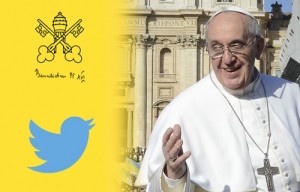By: Jonathan Ng
Since Francis’s appointment in March 2013, he has been challenging the norms of a Pope. One of the ways in which his holiness has stepped outside of the box is by dipping his hands into international affairs and getting involved with the crisis in Syria. After the past couple of years of monitoring this peaceful protest turn into a chaotic uprising, he felt it was time to put a stop to the senseless fighting and reach out for international help.
On Sept. 5, as world leaders gathered for a G-20 summit, Pope Francis wrote a letter to Putin and urged leaders to consider pursuing a negotiated end to Syria’s civil war instead of pursuing military action. As a result, the Holy See issued a rare and detailed six-point program for peace as an alternative to the use of violence.
According to the letter, the Pope focused on, “Re-launching dialogue and reconciliation, avoiding division of the country into different zones and maintaining its territorial integrity.” He emphasized the idea of peaceful negotiations and respecting religious freedom and human rights. One of the diplomats who attended the briefing said he and his colleagues were “surprised at the detail of the program,” which aimed at ending the Syrian conflict and organizing a transition period and post-war reconstruction, according to ncregister.com.
Leaders were astonished by the pope and his determination to see this crisis through. “The briefing showed us that the Vatican means business; it’s not just rhetoric or platitudes,” the diplomat said, according to ncregister.com.
Since then, the Pope met up with Putin in Geneva on Nov. 25 to set up a peace conference to discuss further plans of negotiations in Syria. He also set up Sept. 7 as a special day of fasting and prayer for those suffering in the middle-east.
The Pope’s actions in attempting to solve the crisis in Syria is an example of the Diffusion of Innovation Theory. His letter to the summit gave a detailed plan to the leaders creating awareness of his plan, interest for a non-violent solution, evaluation that it may be a peaceful and efficient way of solving the crisis, trial with plans to set up the peace conference for further discussion on the topic, and adoption by others, such as Putin, who agree with the Pope’s plan and want to put it into action.
I believe that this is a great example of public relations because Pope Francis is making a bold move to step outside of his comfort zone and address not only a religious crisis, but a highly political one. It shows people that he is willing to utilize his power and channel it ways that create change that no Pope has done before. Previous Popes have struggled with having international influence other than within the religious realm. Now that Pope Francis is taking the initiative to create peace in Syria, people are starting to see him in a whole new light. As news sources continue to promote his course of action throughout the world, his presence more is becoming gradually known and credible as a international leader of peace.
Sources
http://www.ncregister.com/daily-news/pope-francis-outlines-syria-peace-plan/
http://articles.latimes.com/2013/sep/05/world/la-fg-wn-pope-francis-syria-20130905
http://www.rawstory.com/rs/2013/11/25/pope-francis-meets-with-putin-to-discuss-the-syria-conflict/






